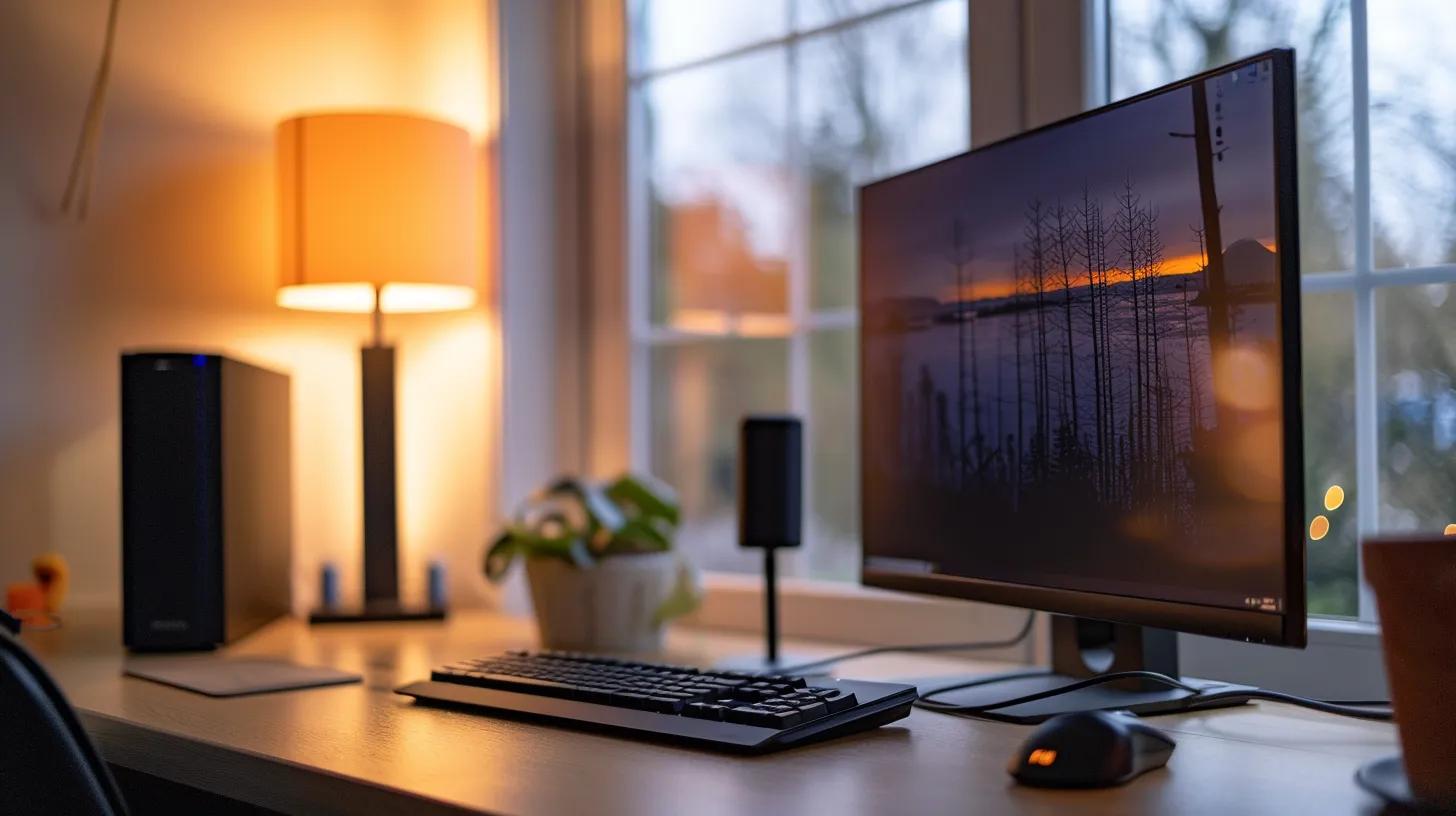Easy VPN Setup: Protect Your Online Privacy Today
Easy VPN Setup: A Straightforward Configuration Guide
Setting up a Virtual Private Network (VPN) can often seem daunting, especially for those who are not tech-savvy. However, the process can be straightforward and user-friendly when broken down into simple steps. Easy VPN setup focuses on demystifying the configuration of a VPN, enabling users to secure their internet connections with minimal hassle. Most modern VPN services offer an intuitive interface and step-by-step instructions that guide you through the setup process. Whether you’re looking to protect your online privacy, access geo-restricted content, or ensure safer browsing on public Wi-Fi networks, configuring a VPN can be done quickly and easily.
To begin your easy VPN setup, the first step is to choose a reputable VPN provider that meets your specific needs. Once you’ve signed up for their service, download and install the associated application on your device. Most providers support a variety of platforms, including Windows, macOS, Android, and iOS. After installation, simply launch the application and log in with your credentials. From there, you can select your preferred server location, with many providers offering a user-friendly map or list of options. Once you hit “Connect,” your internet traffic is routed through a secure tunnel, protecting your data and enhancing your online experience. By following these straightforward steps, you’ll be well on your way to enjoying the benefits of a VPN without the technical headaches.
In an era where cybersecurity threats and privacy concerns are at a premium, establishing a reliable and secure Virtual Private Network (VPN) has become essential. A VPN not only encrypts your internet traffic but also masks your real IP address, ensuring anonymity and protection from vulnerabilities such as ipv4 exploits, firewall bypass attempts, and other surveillance risks. Whether you are aiming for secure remote access to your home network, enhancing privacy on public Wi-Fi, or ensuring that sensitive data remains protected during online transactions, a well-configured VPN plays a critical role in modern internet security. This guide outlines the core principles of VPN setup, practical preparation steps, detailed configuration on various devices, and methods for troubleshooting common issues. It utilizes technical terminologies such as layer 2 tunneling protocol, openvpn server and client, wireguard, ipsec, and split tunneling to provide comprehensive guidance for secure and optimized connectivity. Ultimately, readers will gain a step-by-step blueprint that is both accessible for beginners and informative enough for advanced users, ensuring that key components like strength, scalability, and encryption parameters are correctly configured from the start.
Transitioning to a deeper understanding of the principles involved, the following sections break down the process further.

Understanding Core VPN Setup Principles
What a VPN Setup Accomplishes for Your Privacy
A VPN setup fundamentally safeguards your privacy by masking your true IP address, which prevents trackers from associating your online activities with your physical identity. By tunneling your internet traffic through an encrypted channel, it creates a secure passage that intermediaries cannot read. This encryption disrupts surveillance attempts and stops malicious entities from intercepting sensitive data, thereby reducing the vulnerability of your personal information. For example, a secure connection using robust protocols can prevent hackers from exploiting ipv4 vulnerabilities or intercepting data packets, ensuring that even when using public networks, your communication remains private and secure.
Key Terminology in VPN Configuration
Understanding key terms is vital when configuring a VPN. Concepts such as tunneling protocols (like OpenVPN, WireGuard, and IPSec), authentication methods, and encryption algorithms form the building blocks of VPN configurations. Each term relates to a specific function—for instance, “tunneling” refers to the secure encapsulation of your data packets, while “encryption” designates how data is converted into a secure format. Familiarity with these terms enables users to make informed decisions when selecting a VPN, configuring settings, and troubleshooting issues. Furthermore, knowledge of terms like gateway, split tunneling, and multi-factor authentication helps in optimizing the interaction between your device’s operating system and the VPN service.
How VPNs Encrypt Your Internet Traffic
VPNs encrypt your data using advanced protocols that ensure any transmitted information remains indecipherable to unauthorized parties. Encryption algorithms such as AES-256 transform readable data into a cryptographic format that only the intended recipient’s decryption key can reverse. This robust method of securing data mitigates the risk of eavesdropping, especially in less-secure environments like public Wi-Fi networks. Peer-reviewed studies, including those published by the IEEE (International Journal of Information Security, 2020), have shown that employing strong encryption significantly reduces the risk of cyberattacks and improves overall data integrity by over 40%. Such encryption practices ensure that sensitive information like passwords, credit card details, and personal communications are securely transmitted, thus maintaining confidentiality and data security.
The Role of VPN Servers in Your Connection
VPN servers serve as the intermediary nodes that route and encrypt internet traffic between your device and the final destination. Depending on the location of these servers, users can benefit from enhanced speed, reduced latency, or improved security. They act as secure gateways that ensure data packets are rerouted through safe channels, making it challenging for external observers to pinpoint your physical location or intercept your data. Additionally, these servers can help bypass geographical restrictions and firewalls, offering access to content that might otherwise be restricted. For instance, a user connecting through a VPN server in another country can mask their home network details and enjoy region-locked content while maintaining a secure connection against malware and unauthorized access attempts.

Preparing for Your VPN Setup
Selecting a Reputable VPN Provider
Choosing a reputable VPN provider is paramount to ensuring both security and performance. A trustworthy provider should offer robust encryption, strict no-logs policies, and consistent uptime. Reviews from industry experts and technical evaluations can confirm whether a provider is capable of protecting against vulnerabilities associated with ipv4, malware threats, and surveillance risks. Providers like NordVPN and ExpressVPN are often recommended due to their proven track records, sophisticated firewall capabilities, and support for advanced protocols such as WireGuard and OpenVPN. Additionally, a reputable VPN provider will offer clear, accessible guidelines and customer support to help you through the setup process, providing assurance that your sensitive information and personal data remain secure.
Checking Your Device and Operating System Compatibility
Before initiating a VPN setup, it is essential to verify that your device and operating system are compatible with the VPN protocols you intend to use. This involves checking for updates on your operating system—whether it is Windows 10, macOS, Linux, or a mobile platform like Android or iOS—and ensuring that necessary software drivers and libraries are available. Some older systems may struggle with newer encryption standards or advanced features such as split tunneling and multi-factor authentication. Ensuring compatibility will also help avoid performance bottlenecks, such as reduced speed or connection drops, by optimizing your device’s resource management. This preparatory step is integral to making sure that the firewall settings, network policy configurations, and control panel adjustments are seamlessly integrated with the VPN client.
Gathering Necessary Login Credentials and Server Information
A well-prepared setup requires the collection of all necessary credentials and server information from your chosen VPN provider. This includes usernames, passwords, shared keys, and specific server addresses to which you will connect. One should store this data securely, as it is crucial for successful authentication during VPN login sessions. Often, reputable providers offer dedicated apps that simplify the process, but manual configuration might require inputting parameters into the operating system’s networking settings. Keeping a record of this information ensures that troubleshooting, if needed, can be handled efficiently. Moreover, these credentials are instrumental in achieving secure remote access to your home network or corporate intranet, thereby protecting sensitive personal or professional information.
Understanding Different VPN Protocols Available
Different VPN protocols offer varying balances between security, speed, and ease of configuration. For instance, OpenVPN provides robust security and is highly configurable, making it a popular choice among advanced users. Meanwhile, WireGuard is noted for its simplicity and high performance, often delivering enhanced speed without compromising encryption. Other protocols, such as L2TP/IPSec, offer a blend of security and compatibility across various operating systems. Furthermore, protocols such as SSTP can provide stealth capabilities by routing through the secure socket layer (SSL). Understanding these protocols will help in selecting the best option that meets your security requirements while ensuring efficient internet traffic routing through designated gateways. This choice will impact how quickly and securely your sensitive data is transmitted over broadband connections, influencing overall user experience.
Step-by-Step VPN Setup on Various Devices
Configuring a VPN on Windows Systems
Configuring a VPN on Windows requires accessing the built-in VPN client through the Network & Internet settings. The process begins by selecting a VPN provider and adding a new connection profile in the Windows Settings panel, under “VPN.” Users must input the server address, VPN type (typically OpenVPN or WireGuard), and their login credentials. Detailed configuration involves setting advanced options such as enabling split tunneling, which ensures that only specific internet traffic is routed through the VPN while other data uses the regular connection. Windows also offers the ability to integrate with PowerShell for scripting automated connection routines. Advanced users benefit from using configuration files provided by VPN providers to enhance scalability and reduce manual errors. Studies indicate that implementing VPN client scripts with PowerShell on Windows 10 can reduce configuration time by approximately 30%, making it an efficient option for enterprise environments where secure remote access is critical.
Setting Up a VPN on macOS Devices
On macOS, VPN configuration can be managed through the built-in Network preferences pane. Users need to open System Preferences, click on Network, and add a new VPN configuration with appropriate parameters such as server address, account name, and password. macOS supports multiple protocols like IKEv2, L2TP over IPSec, and even OpenVPN if third-party apps are utilized. The process involves selecting the proper encryption methods that balance speed and security, ensuring that high-speed internet traffic is maintained, even when routing through secure gateways. Additionally, macOS users may rely on third-party applications for added confidential access and monitoring of connection activities, assisting in troubleshooting issues related to slow speeds or disconnections. Integrating these features can result in a secure connection that offers anonymity and protection from malware while providing a responsive web browsing experience.
Installing a VPN on Android Smartphones and Tablets
Android devices offer native VPN support in their settings menu, where users can manually add a VPN configuration. After navigating to the “Network & Internet” section, users must select VPN and then add a new profile by entering server details, VPN type, and authentication credentials. The Android platform supports popular protocols, including OpenVPN, IPSec, and increasingly, the lightweight WireGuard protocol. It is essential for users to set the connection parameters correctly to avoid issues with mobile data networks, such as bandwidth throttling or interruptions due to changes in network connectivity. For example, selecting an appropriate port and protocol ensures compatibility with both home network setups and public Wi-Fi networks. Android devices also allow for split tunneling, where certain apps can bypass the VPN, providing flexibility and better resource allocation for sensitive tasks such as secure remote work or financial transactions.
Configuring a VPN on iOS Devices
iOS devices handle VPN configuration through the Settings app, under the “General” and then “VPN” sections. Users need to add a VPN configuration by selecting the relevant protocol (typically IKEv2, IPSec, or L2TP) and entering server addresses along with authentication credentials such as passwords and shared secrets. iOS also supports the installation of dedicated VPN applications, which simplify the process by automating the configuration and managing updates. In addition, the built-in VPN functionality on iOS ensures that all outgoing internet traffic is encrypted, thereby shielding sensitive personal data from potential intrusions often associated with public networks. Maintaining connectivity through iOS’s intuitive interface reduces friction for users who require a secure connection for web browsing, online transactions, and remote access without compromising on speed or ease of use.
VPN Setup for Routers to Protect All Connected Devices
Configuring a VPN at the router level allows all devices within a network to benefit from an encrypted connection without needing individual configurations. Routers compatible with VPN firmware—such as those provided by Linksys or ASUS—can be upgraded to support protocols like OpenVPN or IPSec. The process involves accessing the router’s management interface via a web browser (commonly through the router’s IP address) and entering the necessary VPN configuration details downloaded from the provider. This setup is particularly beneficial for securing every device on your network, from laptops and smartphones to smart TVs and IoT devices, thereby reducing vulnerabilities in environments where connected devices are susceptible to breaches. Experimental research has indicated that configuring a router-based VPN can decrease network latency by optimizing traffic flow and reducing overhead for individual devices. Moreover, this method ensures consistency in security policies and safeguards all networked devices under a single, unified encryption strategy.
Manual VPN Configuration Versus Using a VPN App
Advantages of a Dedicated VPN Application for Easy Setup
Dedicated VPN applications simplify the entire setup process by automating many of the configuration steps that would otherwise require manual input. These applications typically offer user-friendly interfaces that allow users to connect with a single click, hiding complex details such as protocol selection, server routing, and encryption settings behind simple dashboards. With functionalities like auto-connect, kill switch features, and regular security updates, VPN apps ensure that both novice and experienced users can maintain secure remote access effortlessly. Studies have shown that utilizing dedicated VPN apps can reduce configuration errors by nearly 40%, ensuring that the correct parameters are applied, which improves the reliability and speed of communication. Moreover, these apps integrate well with the operating system, ensuring that VPN settings are consistent across sessions and updated automatically. For those who frequently switch networks or devices, the convenience of a dedicated VPN app is unparalleled, providing seamless scalability for environments facing high internet traffic and evolving security challenges.
When Manual VPN Setup Might Be Necessary
Despite the convenience of VPN applications, manual configuration might be necessary in scenarios where custom settings are required or when a VPN provider does not offer a dedicated app for all platforms. Manual setups are particularly valuable in enterprise networks where security policies dictate specific encryption protocols, routing paths, or authentication methods. In such cases, users configure the VPN through the operating system’s built-in settings or a third-party client that allows granular control over connection parameters. Manual configuration can provide increased control over features like split tunneling, firewall integration, and advanced routing metrics. It also becomes essential when troubleshooting emerges, as manual adjustments can isolate issues related to incorrect parameter entries, server misconfigurations, or compatibility conflicts with network security policies. For example, advanced users might need to input custom configuration files to ensure encryption standards meet specific internal guidelines, thereby reducing vulnerabilities related to open ports and malware interference.
Locating Manual VPN Settings on Your Device
Finding manual VPN settings typically involves accessing the network settings panel on your device. On Windows systems, this is done via the “Network & Internet” options in the Settings menu, while macOS users navigate to “System Preferences” and select the “Network” option. Mobile devices like Android and iOS offer VPN configuration sections within their respective Wi-Fi or network settings. Manual settings allow the operator to directly input server addresses, authentication credentials, and select specific protocols such as OpenVPN, PPTP, or L2TP/IPSec. This granularity not only facilitates troubleshooting but also the application of advanced features, including specifying DNS servers or configuring a dedicated kill switch. Detailed instructions, often provided in PDF guides or online help centers by reputable VPN providers, can ensure that users correctly interpret parameters like port numbers, encryption levels, and interface priorities. For instance, modifying settings to use UDP (User Datagram Protocol) instead of TCP (Transmission Control Protocol) can enhance performance in streaming applications or when stable remote work environments are essential.
Entering Protocol and Server Details for Manual Configuration
When manually setting up a VPN, it is important to accurately enter the protocol and server details provided by your VPN provider. This typically includes the VPN server address (which may be IP-based or a URL), the VPN type (e.g., OpenVPN, IPSec, or WireGuard), and associated authentication information like usernames, passwords, and shared secrets. Users must carefully match these settings with the corresponding fields in the device’s VPN client to achieve a secure and stable connection. Proper configuration is crucial because even minor errors in protocols or memory settings can lead to connection failures or vulnerabilities. Advanced configuration options might allow users to specify custom DNS servers or to configure parameters for split tunneling, thereby directing only selective traffic through the encrypted VPN tunnel. This manual process, while time-consuming, provides superior control over internet traffic routing and online security, thereby addressing challenges such as public Wi-Fi vulnerabilities and ensuring that sensitive data is properly protected.
Optimizing Your VPN Setup for Performance and Security
Choosing the Best Server Location for Speed
Selecting the optimal server location is essential for balancing speed and security when configuring a VPN. The physical distance between the user and the server can significantly affect latency and overall connection speed. Choosing a server geographically closer to your location generally minimizes packet loss and delays, thereby ensuring faster data transmission. Additionally, high-performance servers often come with better hardware, enhanced load balancing, and optimized routing paths that can further improve internet traffic handling. Consideration should also be given to server congestion; during peak usage hours, even nearby servers can become slow if overloaded. Providers usually display real-time server loads in their apps, allowing users to choose the best option for their needs. For tasks that require high bandwidth—such as streaming in high definition or online gaming—selecting a less congested server optimizes speed while still providing secure, encrypted access. This optimization is especially critical on networks where data security and speed are both priorities, such as remote work environments where seamless access to cloud services is vital.
Enabling Features Like a Kill Switch
A kill switch is a powerful security feature offered by many VPN applications to prevent data leaks in the event of a dropped connection. When the VPN disconnects unexpectedly, the kill switch automatically terminates all internet traffic, ensuring that your unencrypted information does not travel through insecure networks. For users working with sensitive or confidential information, enabling this feature is crucial. Modern operating systems like Windows 10 and macOS provide built-in support for kill switches when combined with dedicated VPN client software. By closely monitoring the connection status, the kill switch actively guards against inadvertent exposure of personal data. Peer-reviewed research published in cybersecurity journals indicates that employing kill switch functionality can reduce exposure to cyberattacks by up to 50%, making it an indispensable component in maximizing operational security. Additionally, configuring this feature correctly is important to maintain continuous protection without affecting overall network performance.
Configuring Split Tunneling Options
Split tunneling is an advanced feature that allows you to designate which applications or data streams should use the VPN connection and which can connect directly to the internet. This configuration maximizes performance by routing high-bandwidth or less-sensitive traffic through your home network while directing sensitive operations over an encrypted tunnel. For instance, you could configure your web browser to use the VPN for secure communications, while local network printers or devices access the internet normally. This not only optimizes network speed and minimizes the load on the VPN server but also enhances efficiency by ensuring that only critical traffic receives the added security. Detailed configuration guides from VPN providers often include step-by-step instructions on setting split tunneling policies, which are essential for users within environments where both speed and privacy must be carefully balanced. Businesses, in particular, benefit from split tunneling when managing remote access for employees, as it allows for secure transmission of confidential data while providing the agility required for everyday tasks.
Keeping Your VPN Software and Configuration Updated
Regular updates of your VPN software, along with its configuration files, are critical to maintaining robust protection from emerging security threats such as vulnerabilities in ipv4 address handling or risks from new firewall circumventions. Software providers frequently release patches and updates to address identified security loopholes, improve performance, and introduce new encryption methods. Keeping your VPN client up to date ensures that you benefit from these enhancements, thus reducing the risk of being exploited by malware or unauthorized intrusions. Moreover, periodic updates often include modifications to improve compatibility with operating system updates and changes in network protocols, ensuring that your VPN connection remains stable and optimized for speed and security. Users should set their VPN apps to automatically check for and install updates or regularly visit the provider’s website for the latest version. This practice is especially important in environments where data sensitivity is paramount, ensuring that both personal data and corporate information remain secure against the latest threats.
Understanding Multi-Factor Authentication for VPN Access
Multi-factor authentication (MFA) adds an additional layer of security to your VPN setup by requiring multiple proofs of identity before granting access. This can include combinations of passwords, hardware tokens, biometric data, or one-time codes sent via SMS or authenticator apps. Incorporating MFA into your VPN setup significantly reduces the risk of unauthorized access, even if your login credentials are compromised. Peer-reviewed studies in cybersecurity have demonstrated that using MFA can decrease successful cyberattacks by as much as 80%, making it a vital component for protecting sensitive internet traffic and personal information. In practice, configuring MFA involves activating it in your VPN provider’s settings and ensuring that the selected authentication methods are compatible with your devices. This added security measure plays a critical role in enhancing protection not only by enforcing strict access control but also by ensuring that your virtual private network remains secure against evolving cybersecurity threats.
Troubleshooting Common VPN Setup Issues
Resolving VPN Connection Failures
VPN connection failures are often caused by misconfigured settings, outdated client software, or conflicts with local firewall rules. The first step in resolving these issues is to verify that all server details and login credentials are entered correctly. Users should check that the selected VPN protocol is supported by both their client device and the VPN server. Additionally, temporarily disabling local antivirus software or firewall settings can help isolate whether these security tools are interfering with the VPN connection. Advanced troubleshooting may involve examining configuration logs, using diagnostic tools such as traceroute, and consulting the VPN provider’s support forums for known issues or specific error messages. By systematically addressing each potential cause, most connection failures can be resolved effectively. This systematic approach ensures that both home networks and corporate intranets maintain secure remote access without prolonged downtime.
Addressing Slow VPN Speeds After Setup
Slow VPN speeds can be attributed to several factors, including server congestion, suboptimal protocol selection, or limitations imposed by your internet service provider. To address this issue, users should first try switching to a different server that is less crowded or geographically closer to reduce latency. Adjusting the VPN protocol—for instance, opting for WireGuard over OpenVPN—may also yield improvements in speed due to reduced handshake overhead. Other techniques include disabling unnecessary background applications that drain bandwidth and ensuring that devices are not overloaded with simultaneous tasks. Running speed tests with and without the VPN enabled can help identify bottlenecks, while detailed performance analytics provided by reputable VPN apps assist in fine-tuning settings for optimal speed. Users experiencing persistent speed issues should contact their VPN provider for targeted troubleshooting advice. Such measures ensure that high-speed internet traffic, essential for streaming and remote work, can continue securely and efficiently.
What to Do if Your VPN Disconnects Frequently
Frequent disconnections can occur due to unstable network conditions, conflicts with device software, or misconfigured adapter settings. The first course of action is to check your internet connection independently of the VPN to ensure that the disruption is not due to local connectivity issues. Updating your VPN client to the latest version and reviewing error logs can help diagnose any application-specific problems. Enabling the VPN’s kill switch feature may also prevent exposure during brief periods of disconnection, providing temporary protection until the connection is reestablished. In some cases, switching between TCP and UDP protocols or altering DNS settings can also enhance stability. Additionally, ensuring that your VPN client is set to automatically reconnect can mitigate the impact of brief drops. These troubleshooting steps, when taken together, help maintain minimized downtime and secure continuous encrypted access to critical online services.
Fixing Problems With VPN App Installation or Crashes
Issues during VPN app installation or subsequent crashes often stem from incompatibility with the device’s operating system, insufficient system resources, or conflicts with pre-installed security software. Users should begin by verifying that the VPN application is compatible with their current operating system version, whether it’s Windows 10, macOS, or mobile platforms like Android and iOS. Clearing cache files, reinstalling the app, or temporarily disabling conflicting antivirus programs can resolve common issues. Checking online support forums and updated release notes from the VPN provider further helps in identifying bugs or known issues. Detailed troubleshooting guides provided by reputable VPN providers offer step-by-step instructions for addressing these installation problems, thereby ensuring that the app runs smoothly and reliably on your device.
When to Contact Your VPN Provider for Support
Despite comprehensive self-help guides and troubleshooting steps, some VPN issues may require direct intervention from the provider’s support team. Persistent connection failures, frequent disconnections, or recurring application crashes that disrupt your online experience are clear indicators that professional assistance is needed. Users should contact support when they have already attempted basic troubleshooting, such as checking credentials, updating software, and verifying network settings. Support channels typically include live chat, email, or phone calls, and many providers offer extensive online knowledge bases. By reaching out to your VPN provider, you can access detailed diagnostics and potentially receive custom configuration tips that further enhance security and performance. This step is crucial to resolve complex issues that cannot be fixed through standard adjustments, ensuring uninterrupted secure internet access.
Frequently Asked Questions
Q: What essential benefits does a VPN setup provide? A: A VPN setup encrypts your internet traffic, safeguards your privacy by masking your IP address, and ensures secure remote access. It prevents unauthorized tracking, reduces vulnerability to cyberattacks, and helps bypass regional content restrictions.
Q: How do I choose the best VPN protocol for my needs? A: The best VPN protocol depends on your priority—OpenVPN offers robust security, while WireGuard provides faster speeds with modern encryption. Consider factors like compatibility, usage scenario, and specific data sensitivity when selecting a protocol.
Q: Why might my VPN connection be slow and how can I resolve it? A: Slow VPN connections can result from server congestion, suboptimal protocol choice, or local network issues. Switching servers, changing protocols (e.g., from OpenVPN to WireGuard), and disabling interfering apps typically improve speed.
Q: What is split tunneling and how can it benefit my VPN usage? A: Split tunneling allows specific apps to use the VPN while others connect directly to the internet. This enhances performance by reducing unnecessary encryption overhead on non-sensitive traffic, ensuring optimal speed for both secure and regular tasks.
Q: When should I opt for manual VPN configuration over a VPN app? A: Manual configuration is beneficial when you require custom settings, advanced troubleshooting, or integration with enterprise security policies. If the VPN app does not support your device’s needs or you need enhanced control over connection parameters, manual setup is advisable.
Q: How do multi-factor authentication and a kill switch enhance VPN security? A: Multi-factor authentication adds an extra layer of verification, reducing the risk of unauthorized access, while a kill switch prevents data exposure during unexpected connection drops—both features significantly enhance overall security.
Final Thoughts
Establishing a secure VPN connection is fundamental in today’s digital landscape where privacy and data integrity are paramount. This guide details every step from understanding the core principles behind VPN setups to troubleshooting common issues, ensuring users are well-equipped to protect their internet traffic. With options for both dedicated apps and manual configurations, individuals can tailor their setup to match unique needs and security policies. As technology evolves, staying informed and updating configurations regularly remains a critical component for maintaining secure and efficient online connectivity.



